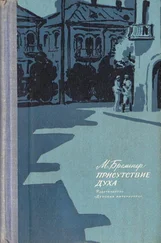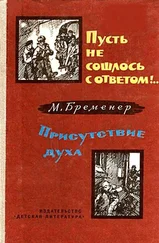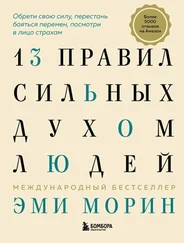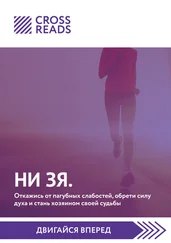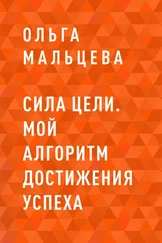Ito T. A., Chiao K. W., Devine P. G., Lorig T. S. & Cacioppo J. T. (2006). The influence of facial feedback on race bias. Psychological Science, 17, 256–261.
Mori H. & Mori K. (2007). A test of the passive facial feedback hypothesis: We feel sorry because we cry. Perceptual and Motor Skills, 105, 1242–1244.
Mori K. & Mori H. (2010). Examination of the passive facial feedback hypothesis using an implicit measure: With a furrowed brow, neutral objects with pleasant primes look less appealing. Perceptual and Motor Skills, 111, 785–789; Larsen R. J., Kasimatis M. & Frey K. (1992). Facilitating the furrowed brow: An unobtrusive test of the facial feedback hypothesis applied to unpleasant affect. Cognition & Emotion, 6, 321–338; Duclos S. E. & Laird J. D. (2001). The deliberate control of emotional experience through control of expressions. Cognition & Emotion, 15, 27–56.
Lewis M. B. & Bowler P. J . (2009). Botulinum toxin cosmetic therapy correlates with a more positive mood. Journal of Cosmetic Dermatology, 8, 24–26.
Wollmer M. A., de Boer C., Kalak N., Beck J., Götz T., Schmidt T. & Kruger T. H. (2012). Facing depression with botulinum toxin: A randomized controlled trial. Journal of Psychiatric Research, 46, 574–581.
Neal D. T. & Chartrand T. L. (2011). Embodied emotion perception amplifying and dampening facial feedback modulates emotion perception accuracy. Social Psychological and Personality Science, 2, 673–678.
Dimberg U., Thunberg M. & Elmehed K. (2000). Unconscious facial reactions to emotional facial expressions. Psychological Science, 11, 86–89.
North-Hager E. (2011, April 22). Botox impairs ability to understand emotions of others. Взято по адресу: https://pressroom.usc.edu/botox-impairs-ability-tounderstand-emotions-of-others/.
Ibid.
Laird J. D. & Lacasse K . (2014). Bodily influences on emotional feelings: Accumulating evidence and extensions of William James’s theory of emotion. Emotion Review, 6, 27–34, 31–32. Более полный обзор исследований мимической обратной связи можно найти в работе Laird, J. D. (2006). Feelings: The perception of self. Oxford: Oxford University Press.
Кое-кто предлагает убрать букву «Р» из аббревиатуры ПТСР, чтобы устранить социальную стигму, связанную со словом «расстройство». См. Thompson M. (2011, June 5). The disappearing «disorder»: Why PTS is becoming PTS. Взято по адресу: http:// nation.time.com/2011/06/05/the-disappearing-disorder-why-PTS-is-becoming-pts/.
Van der Kolk B. A. (2014). The body keeps the score. New York: Viking, 213.
Interlandi J. (2014, May 22). A revolutionary approach to treating PTS. The New York Times Magazine. Взято по адресу: http://www.nytimes.com/2014/05/25/ magazine/a-revolutionary-approach-to-treating-PTS.html.
Seppälä E. M., Nitschke J. B., Tudorascu D. L., Hayes A., Goldstein M. R., Nguyen D. T. H., Perlman D. & Davidson R. J. (2014). Breathing-based meditation decreases posttraumatic stress disorder symptoms in U.S. military veterans: A randomized controlled longitudinal study. Journal of Traumatic Stress, 27, 397–405.
Цитируется там же.
McGonigal K. (2009). Yoga for pain relief: Simple practices to calm your mind and heal your chronic pain. Oakland, CA: New Harbinger Publications.
Van der Kolk, The body keeps the score, 214.
Ibid., 208. В своей книге я рассказываю только о дыхании и движении, но ритм и хоровое пение тоже могут быть полезны для достижения присутствия. Дальнейшую информацию см. в книге ван дер Колка.
Van der Kolk B. A., Stone L., West J., Rhodes A., Emerson D., Suvak M., & Spinazzola J. (2014). Yoga as an adjunctive treatment for posttraumatic stress disorder: A randomized controlled trial. The Journal of Clinical Psychiatry, 75, 559–565.
Melville G. W., Chang D., Colagiuri B., Marshall P. W. & Cheema B. S. (2012). Fifteen minutes of chair-based yoga postures or guided meditation performed in the office can elicit a relaxation response. Evidence-Based Complementary and Alternative Medicine, 2012.
Недавний обзор см. в Muhtadie L., Koslov K., Akinola M. & Mendes W. B. (2015). Vagal flexibility: A physiological predictor of social sensitivity. Journal of Personality and Social Psychology, 109, 106–120.
Van der Kolk, The body keeps the score, 201.
Seppälä et al., Breathing-based meditation; Bhasin M. K., Dusek J. A., Chang B. H., Joseph M. G., Denninger J. W., Fricchione G. L., Benson H. & Libermann T. A. (2013). Relaxation response induces temporal transcriptome changes in energy metabolism, insulin secretion and inflammatory pathways. PLoS ONE, 8, e62817–e62825; Peters R. K., Benson H. & Porter D . (1977). Daily relaxation response breaks in a working population: I. Effects on self-reported measures of health, performance, and well-being. American Journal of Public Health, 67, 946– 953; Benson H., Wilcher M., Greenberg B., Huggins E., Ennis M., Zuttermeister P. C., Myers P. & Friedman R. (2000). Academic performance among middle school students after exposure to a relaxation response curriculum. Journal of Research and Development in Education, 33, 156–165; Tyson P. D. (1998). Physiological arousal, reactive aggression, and the induction of an incompatible relaxation response. Aggression and Violent Behavior, 3, 143–158; Marchand W. R. (2013). Mindfulness meditation practices as adjunctive treatments for psychiatric disorders. Psychiatric Clinics of North America, 36, 141–152; Marchand W. R. (2012). Mindfulness-based stress reduction, mindfulness-based cognitive therapy, and Zen meditation for depression, anxiety, pain, and psychological distress. Journal of Psychiatric Practice, 18, 233–252.
Philippot P., Chapelle G. & Blairy S. (2002). Respiratory feedback in the generation of emotion. Cognition & Emotion, 16, 605–627.
Terathongkum S. & Pickler R. H. (2004). Relationships among heart rate variability, hypertension, and relaxation techniques. Journal of Vascular Nursing, 22, 78–82; Bhasin et al., Relaxation response induces temporal transcriptome changes; West J., Otte C., Geher K., Johnson J. & Mohr D. C. (2004). Effects of Hatha yoga and African dance on perceived stress, affect, and salivary cortisol. Annals of Behavioral Medicine, 28, 114–118; Kim S. H., Schneider S. M., Bevans M., Kravitz L., Mermier C., Qualls C. & Burge M. R. (2013). PTSD symptom reduction with mindfulness-based stretching and deep breathing exercise: Randomized controlled clinical trial of efficacy. The Journal of Clinical Endocrinology & Metabolism, 98, 2984–2992; Nater U. M. & Rohleder N. (2009). Salivary alpha-amylase as a non-invasive biomarker for the sympathetic nervous system: Current state of research. Psychoneuroendocrinology, 34, 486–496.
Читать дальше
Конец ознакомительного отрывка
Купить книгу
![Эми Кадди Присутствие [духа]. Как направить силы своей личности на достижение успеха обложка книги](/books/75845/emi-kaddi-prisutstvie-duha-kak-napravit-sily-s-cover.webp)

